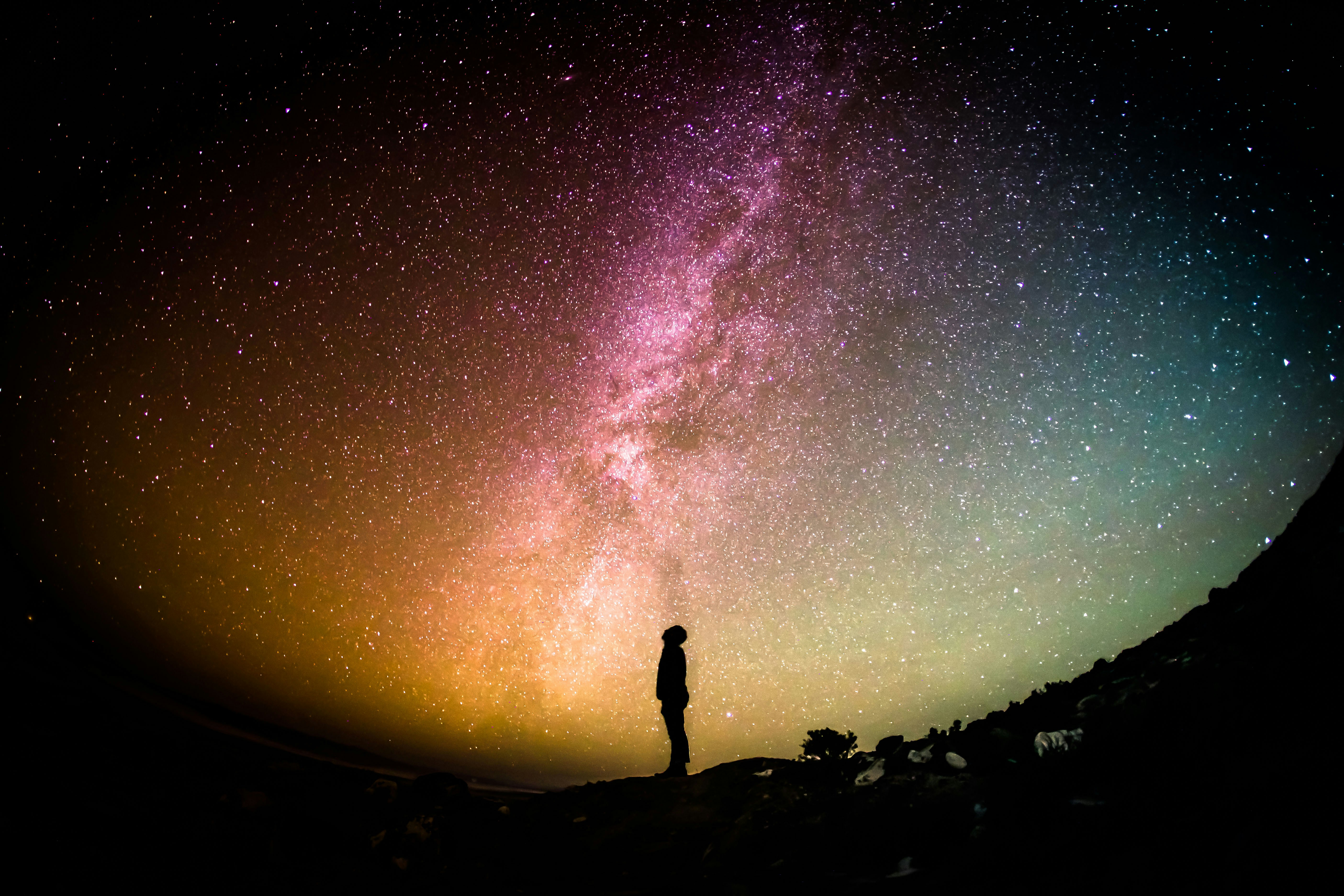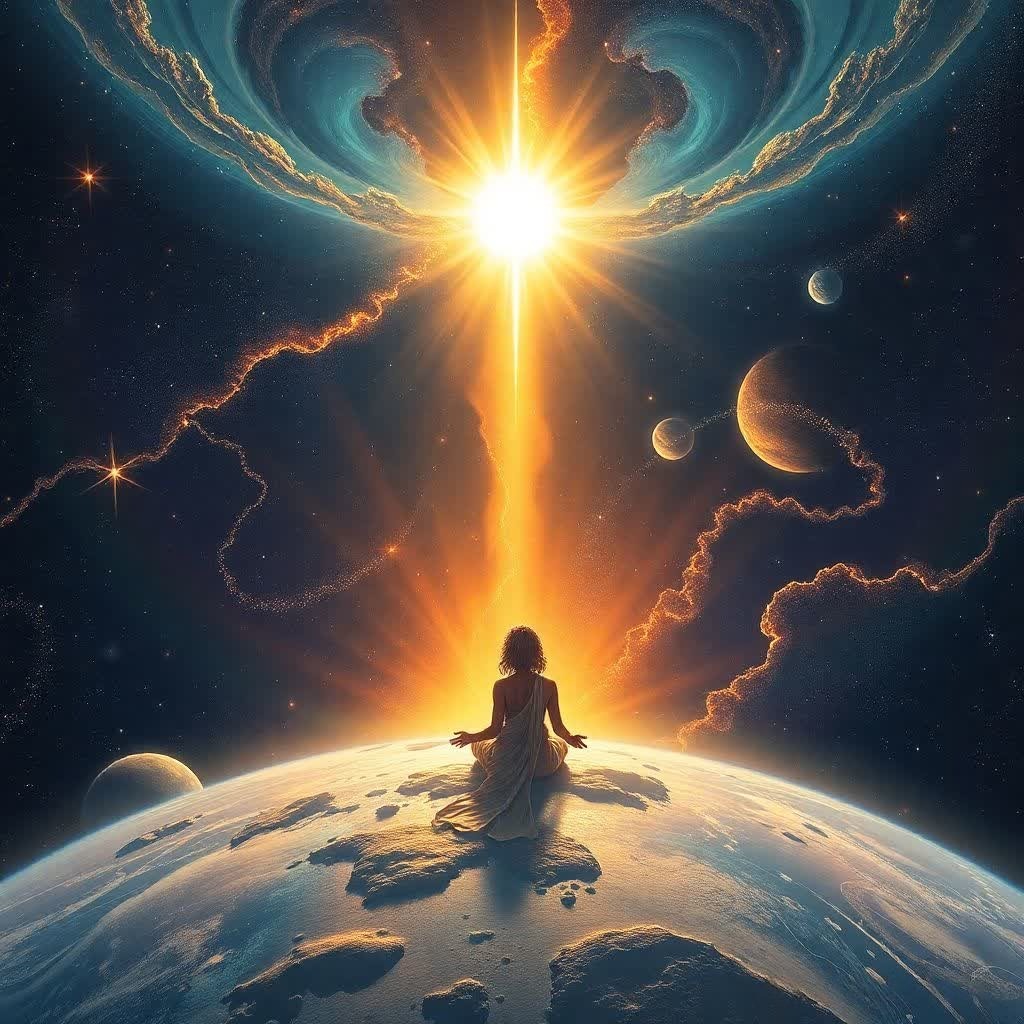Beyond Belief: 10 Space Facts That Shatter Your Reality

Space is full of things that defy logic, feel like science fiction, and yet—are 100% real. From stars that scream to planets made of diamonds, here are 10 bizarre space facts that sound fake… but aren’t.
1. 📢 The “Sound” of Space isn’t Silence
While space is largely a vacuum and sound waves need a medium to travel, there are actually electromagnetic vibrations that can be converted into sound.Imagine the low, guttural rumble of a supermassive black hole, or the ethereal chirping of plasma waves around a distant planet. Space isn’t silent; it’s a symphony of electromagnetic vibrations our ears can’t directly perceive. Planets, stars, and even black holes emit these waves, and scientists have translated them into eerie, often beautiful, soundscapes. So, in a very real sense, space “sings” – we just can’t hear it directly
2. 🤯 The Universe on a Knife Edge: Why Everything Could Vanish in an Instant
Our universe, seemingly stable and governed by constant laws, might actually be resting in a precarious state known as a “false vacuum.” Imagine a ball resting in a shallow dip on a hillside, not at the absolute lowest point of a valley. Our fundamental fields, like the Higgs field which gives particles mass, could theoretically be in such a higher-energy, yet currently stable, state. This unsettling possibility suggests that the very fabric of reality isn’t as solid as we perceive.
The chilling implication is that a tiny quantum fluctuation, anywhere in the vast cosmos, could spontaneously “nudge” the universe into its true, lower-energy vacuum state. If this happens, a “bubble of true vacuum” would instantly form and expand outward at the speed of light. Within this bubble, the fundamental laws of physics would be irrevocably altered: particles might cease to exist as we know them, forces would change, and all matter – stars, galaxies, and everything within them – would instantly dissolve or be transformed into something entirely unrecognizable. Since this bubble expands at light speed, there would be no warning; no signal could outrun its arrival.
While such a catastrophic event, known as Vacuum Decay, is theoretically possible and could have already occurred elsewhere in the ancient universe, current calculations suggest it’s highly unlikely to happen within our lifetimes, or even over timescales vastly longer than the universe’s current age. Nevertheless, the concept serves as a profound reminder of the universe’s ultimate fragility and the deep mysteries that still lie at the heart of quantum physics and cosmology, painting our existence as a cosmic phenomenon potentially held in delicate balance.
3. 🕳️ A Black Hole Once Shredded a Star… and Then “Burped” It Back Out
In 2022, astronomers saw a black hole devour a star and eject part of it back—three years later. Science still doesn’t fully understand how. So, while the event horizon remains an impenetrable veil, the black hole itself is not the final, silent tomb we once imagined.
4. 🔭 You Can See the Past—Literally
When you look at distant stars, you’re seeing light that left them thousands or even millions of years ago. Imagine One clear night, you step outside, look up, and spot a faint, fuzzy patch in the sky. That’s the Andromeda Galaxy, our closest large galactic neighbor. It’s an astounding 2.5 million light-years away.
What does “2.5 million light-years” mean? It means the light you’re seeing from the Andromeda Galaxy today started its journey 2.5 million years ago. When that light began its epic voyage across the cosmos, our human ancestors were just beginning to walk upright on Earth. Dinosaurs were long gone. The ice ages were still a distant future.
You are not looking at the Andromeda Galaxy as it is “right now.” You are looking at a cosmic snapshot from 2.5 million years ago. You are literally witnessing a moment in its ancient history.
5. 👽Tabby’s Star: The Cosmic Flicker and the Alien Megastructure Idea
For decades, we thought we understood how stars behave. Then came KIC 8462852, popularly known as Tabby’s Star. This ordinary-looking star, about 1,470 light-years away, began to do something extraordinary: it dimmed dramatically and irregularly, sometimes by as much as 22% of its light, with no predictable pattern. These weren’t the tiny, regular dips caused by orbiting planets.
Scientists were baffled. Natural explanations like swarms of comets or planetary debris struggled to fully account for the bizarre, non-periodic dimming and the sheer amount of light being blocked. This led to a tantalizing, albeit highly speculative, idea that captured the world’s imagination: could we be witnessing an alien megastructure – perhaps a Dyson sphere or swarm – being built around the star to harness its energy?
6. ✨ The Fastest Thing in the Universe… Isn’t Light
While nothing outruns light, space itself can expand faster than light. That’s how parts of the universe are moving away from us faster than we can see. Think of it like this: Imagine ants crawling on a giant, expanding balloon. The ants can move across the surface at a certain speed, but if the balloon is inflating rapidly enough, two ants that are initially close together can eventually be carried apart by the stretching rubber faster than they can crawl towards each other.
Similarly, the fabric of our universe is stretching, driven by the mysterious force we call dark energy. This expansion is happening everywhere, but its effect becomes more pronounced over vast distances. The farther away a galaxy is from us, the faster the space between us and that galaxy is expanding.
This creates a cosmic horizon, a boundary beyond which the light from objects will never reach us. These aren’t just incredibly far away objects; the very space between us and them is expanding at such a rate that their light is eternally red-shifted, its wavelength stretched to infinity, effectively becoming undetectable. They are receding from us faster than we can “see” them recede.
The implications are profound. There are countless stars and likely entire galaxies residing beyond our cosmic horizon, forever locked away from our view. We will never know what wonders they hold, what unique stellar nurseries or planetary systems might exist there. They are part of our universe, bound by the same fundamental laws, yet forever relegated to the realm of the unseen.
7. 👻 The Ghostly Dance: When Galaxies Collide, But Stars Don’t
Our Milky Way galaxy, home to hundreds of billions of stars, is on a collision course with its larger neighbor, the Andromeda galaxy, which holds a trillion stars. This grand cosmic encounter is predicted to happen in about 4.5 billion years. Despite the immense number of stars involved, you might expect a cataclysmic smash-up, a chaotic demolition derby that would destroy countless stellar systems.
However, the reality is far more subtle and profoundly illustrates the immense scale of space. When these two galactic giants meet, they won’t smash together like solid objects. Instead, they will pass through each other like ghosts. The distances between individual stars, even within the dense galactic cores, are so vast that direct star-on-star collisions will be incredibly rare, almost impossible. It’s like two enormous swarms of bees flying through each other; individual bees might occasionally brush wings, but the swarms largely intermingle without direct impacts.
This “collision” will actually be a gravitational ballet, reshaping both galaxies over billions of years. Stars will be thrown into new orbits, gas clouds will compress to form new stars, and the supermassive black holes at their centers will eventually merge. The end result will be a new, larger elliptical galaxy, sometimes called “Milkomeda.” It’s a powerful reminder that even in the most dramatic cosmic events, the sheer emptiness of space dictates a dance of gravity, not a destructive impact, leaving us to marvel at the universe’s mind-boggling scale.
8. 🌟 Every Atom in Your Body Was Forged in a Star (and not just any star)
This is often quoted, but the mind-bending part is that the heavy elements (like carbon, oxygen, iron, etc.) that make up everything around us and inside us weren’t just created in any star. They were primarily forged in the incredibly energetic deaths of massive stars – supernovae – or in the even more extreme collisions of neutron stars. You are literally made of stardust that survived cosmic catastrophes. You are made of the same particles that existed at the very beginning of the universe. So in a way you are billions of years old and also truly connected to everything that was and everything that will be.
9. 🌑 The Endless Night: The Unfathomable Future of the Universe
Imagine a stopwatch that started ticking with the Big Bang, 13.8 billion years ago. We are here, right now, in the merest blink of an eye in cosmic time. But what about the vast, unimaginable stretch of time yet to come? On this scale, every number you can think of, no matter how big, effectively rounds to zero.
Our present epoch, vibrant with stars, galaxies, and life, is a fleeting golden age. In the grand cosmic timeline, it’s a temporary flicker before an almost eternal darkness. Every star, from the smallest red dwarf to the most colossal blue giant, will eventually exhaust its nuclear fuel. The last stars, tiny red dwarfs, are predicted to flicker out many trillions of years from now. After that, the universe will become a much colder, darker, and emptier place.
For the vast, vast majority of cosmic time yet to pass, there will be no new stars to ignite. The existing stellar remnants – white dwarfs, neutron stars, and black holes – will slowly cool, decay, or evaporate. Even light itself is temporary; photons will continue their journey into an increasingly vast and cold void, spreading out until their energy is too diluted to interact with anything. The universe will eventually reach a state of maximum entropy, a uniform, featureless, extremely cold, and dilute soup where no energy gradients exist to power anything interesting. Just a lifeless dark for an unthinkable amount of time.
This isn’t just about things getting a little dim; it’s about the universe entering an epoch of “darkness” that makes the current age seem like an infinitesimal flash of brilliance. Consciousness, as we understand it, depends on complex structures and energy gradients – things that will cease to exist or become impossibly rare. It’s a future so distant and so empty that it truly challenges our perception of “time” itself.
10. 🛸 The Fermi Paradox: Where Is Everybody?
The universe is vast and old. So why haven’t we found aliens yet? The Fermi Paradox asks: if life should be everywhere, why is space so silent? We often imagine a universe teeming with alien life, given the sheer number of stars and planets out there. Yet, despite decades of searching, the cosmos remains eerily silent—a profound mystery known as the Fermi Paradox: “Where is everybody?” This unsettling silence leads to a compelling, albeit sobering, theory: humanity might be truly alone in the universe.
The leading explanation for this cosmic solitude is the “Great Filter,” a proposed insurmountable barrier that prevents life from reaching an advanced, detectable stage. This filter could lie in our past, meaning that the emergence of life from non-life, the evolution of complex cells, or the development of intelligence are incredibly rare, almost impossible steps. If so, our existence is an extraordinary stroke of cosmic luck, making us potentially unique. Alternatively, the filter could be in our future, suggesting that advanced civilizations inevitably succumb to self-destruction (through war, environmental collapse, or rogue technology) before they can expand into the galaxy.
The silence we observe, despite vast searches, lends weight to the Great Filter theory. While the universe is immense and full of potential habitats, if the probability of intelligent, long-lived, and communicative life is astronomically low due to one or more of these filters, then our isolation makes sense. This theory transforms our existence from a common outcome into an incredibly precious anomaly, placing immense responsibility on us as potentially the sole conscious observers in a vast, silent cosmos.
🚀 Final Thoughts
Space is far weirder than most science fiction. The more we explore it, the more questions we uncover. Keep looking up — the universe has only just started revealing its secrets.
💫 Want more cosmic mysteries? Stay tuned for our next article: “Top 5 Unexplained Signals from Deep Space”
More Cosmic Wonders

The Universe Questioning Itself: What If Consciousness Is the Point?
Is human awareness just a biological glitch, or the universe becoming aware of itself? From Asimov to the Anthropic Principle, this is a journey through one of the deepest questions we may never answer.

Did Futurama Accidentally Explain the Simulation Hypothesis
Futurama posed a silly idea: what if we live in a simulation? But behind the cartoon humor were real, eerie clues that scientists and philosophers have seriously considered. What if the joke... isn't a joke?

If Everything Came from Nothing, Then Where Did That 'Nothing' Come From?
From quantum vacuums to eternal universes, this post dives into one of the most mysterious questions at the edge of science, philosophy, and spirituality.
